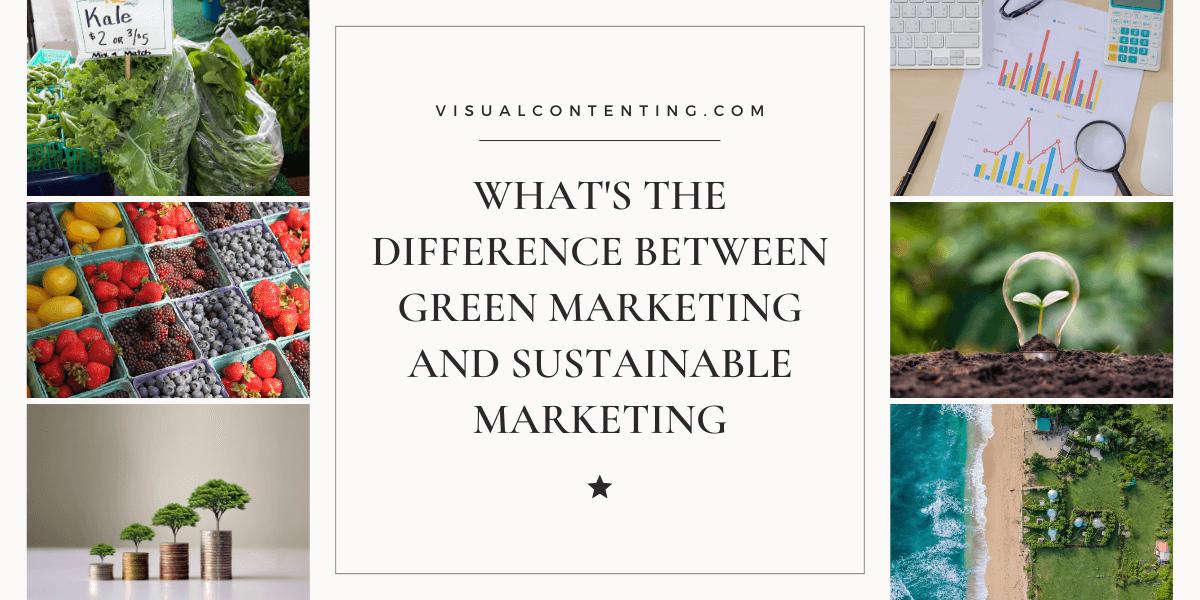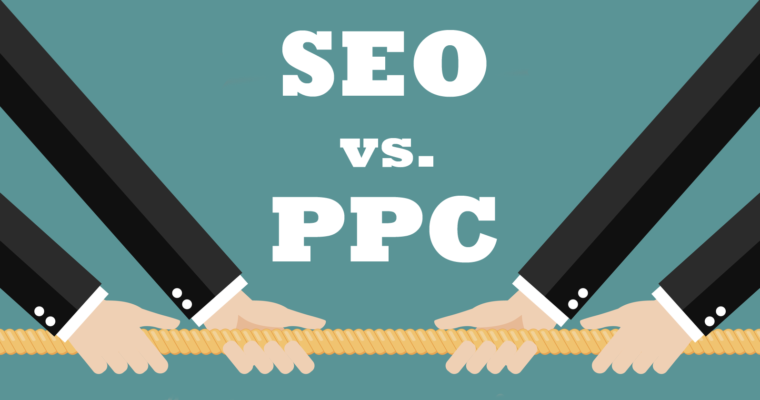People often use both green and sustainability to raise awareness and reference accountability for environmental protection — for instance, keeping the planet healthy for future generations. Marketing experts also use them interchangeably, even though they don’t mean the same thing in the corporate world.
Many have thrown the terms “green” and “sustainable” around synonymously — likely to get a complex point across to the general public regarding social responsibility. Yet, the two words have vastly different meanings in marketing.
Green Marketing vs. Sustainable Marketing
Companies that hope to take advantage of green and sustainable marketing must first understand their differences — only then can they successfully leverage their eco-friendliness in their marketing efforts. If “green” is eco-friendly products and services, then “sustainability” means utilizing them in a way that doesn’t deplete or degrade natural resources.
Green Marketing
Companies have grown increasingly aware of the importance of upholding environmental integrity. With green marketing, they can tout their eco-friendly endeavors to their target audience, building an environmentally-centric reputation around their products and services.
Consumers will easily recognize green marketing by how companies promote their environmental progress — how the products get manufactured, whether resources are ethically obtained and more. As such, companies must modify their messaging and manufacturing processes to reflect the changes they’ve made.
Sadly, many businesses have resorted to greenwashing — promoting environmental ideals without fully adopting eco-friendliness into the company’s line of products and services. According to a Google Cloud and Harris Poll survey, 59% of executives admit to overstating their companies’ sustainability. However, greenwashing tends to backfire for most, as consumers have grown wiser in recognizing false claims.
Sustainable Marketing
Sustainable marketing is broader than green marketing, emphasizing eco-friendliness and profit. Some might view it as striking a balance between providing excellent customer value by delivering eco-friendly goods and safeguarding the company’s bottom line for the future.
Similarly, sustainable marketing looks at the big picture for eco-preservation, including policies and processes that enhance the environment. Overall, sustainable marketing is a long-term solution that integrates facets of the environment, society and the economy.
Sustainable marketing is becoming more prevalent as companies seek ways to reduce their ecological footprints. For example, does a company’s manufacturing operations cause environmental degradation, carbon emissions or pollution? Considering that plastic production has risen by 8.3 billion metric tons since the 1950s, a business might reevaluate its product packaging for biodegradable alternatives.
Green marketing maintains its value, but companies should ultimately strive for sustainable marketing.
Examples of Green and Sustainable Marketing
Many businesses embrace green and sustainable marketing, understanding that they must align their initiatives with environmental well-being to remain competitive and successful. These three companies have honed their eco-friendly marketing approaches for the greater good.
1. Ikea
Global furniture and home decor retailer Ikea has made tremendous strides in implementing green and sustainable marketing strategies by encouraging a circular economy to reduce waste. The company ensures that every product sold derives from waste materials of previously-sold items. In turn, Ikea’s initiatives help customers reduce their ecological footprint.
Customers may return purchased items when they’re done using them and receive a voucher for new Ikea products. Ikea then takes the returned items to produce something new. The company has reused 9,500 products in its circular economy and hopes to achieve full circularity by 2030.
2. Starbucks
Starbucks has received flack for greenwashing throughout the years, but the company has continuously demonstrated its commitment to improving its sustainability. In March 2023, Starbucks announced it was making a $50 million investment to eliminate half of its water and waste footprints by 2030.
The company intends to eliminate single-use plastics and increase circularity with recycled items. The company will also invest $25 million in WaterEquity’s Global Access Fund IV to increase access to safe water, sanitation and hygiene in developing countries.
3. Patagonia
Patagonia has become well-recognized as a leader in corporate sustainability. Although the company refuses to call itself “sustainable” — it is aware that 95% of its emissions derive from the supply chain — many look to Patagonia as a prime model of what other businesses should strive for regarding green and sustainable marketing.
Today, 98% of its product line utilizes recycled materials. Additionally, Patagonia issues a self-tax — the 1% for the Planet program — that financially supports the regeneration and conservation of fragile ecosystems.
With its self-tax and affiliation with indigenous communities and environmental organizations, Patagonia has helped preserve the Tongass National Forest in Alaska since 2008 — 17 million acres of trees that store millions of tons of carbon.
Sustainability at the Forefront of Business
Companies would be remiss to overlook the importance of green and sustainable marketing. Surveys show that 85% of consumers have modified their purchasing habits to account for sustainability. Younger generations are particularly eager to adopt sustainable lifestyles — about one-third of millennials consciously try to buy green product alternatives when they’re available.
For instance, consumers have grown more conscious of how brands manufacture clothes and the materials used to make them. Sadly, fast fashion has become the norm throughout the decades, despite clothing production releasing ample carbon emissions and accruing excess waste.
Many fast fashion brands ultimately fall into the trap of greenwashing. Recently, Zara came under fire for promoting its newest re-commerce program without actively finding solutions to its waste problems — the brand is known for mass-producing 500 clothing styles weekly.
Should companies like Zara fail to make conscious efforts to ramp up sustainable marketing, they’ll get left behind. Consumers are setting the trend toward eco-friendliness by showing greater interest in smaller brands that ethically source materials and manufacture goods. Many are even willing to spend more money on green products. This shift in buying behaviors has placed increasing pressure on companies to adhere to sustainable practices.
Clear Guidelines are Need for Optimal Green and Sustainable Marketing
In November 2022, at the United Nation’s COP27, the Secretary-General issued a scathing warning to companies participating in greenwashing, reminding them that net-zero pledges must align with the Intergovernmental Panel on Climate Change’s (IPCC) global warming limit of 1.5 degrees Celsius. As such, they reminded corporations there must be a 45% decrease in global emissions by 2030 to reach carbon neutrality by 2050.
However, several businesses need more guidance to meet sustainability demands — it’s been nearly a decade since the Securities and Exchange Commission (SEC) updated its disclosure requirements. Nevertheless, companies should evaluate their environmental impacts and devise strategies to boost sustainability.
Businesses must aim for transparency, even when they’ve failed to meet their targets. Full disclosure regarding setbacks and opportunities to improve a situation often goes over better with consumers and allows companies to maintain their reputations.
Additionally, companies must develop metrics to guide sustainable solutions and back up their sustainability claims. Monitoring successes and failures related to climate change and ecological impacts shed light on ways the company can further improve its operations. As regulators, investors and stakeholders lean into corporate social responsibility, vague or unsubstantiated statements could prove dire.
Green and Sustainable Marketing — Mutually Exclusive but Both Crucial
Although green marketing and sustainable marketing have two different meanings, their roles in corporate environmental responsibility overlap in many ways. A company should strive for sustainability but can only do so by overhauling its processes for greener products and services. Most businesses want to become environmentally friendly, with or without consumer pressures. However, they must make genuine efforts to improve their ecological impacts.
Related Posts
Devin Partida writes about topics concerning tech and the internet. She is also the Editor-in-Chief of ReHack.com.







